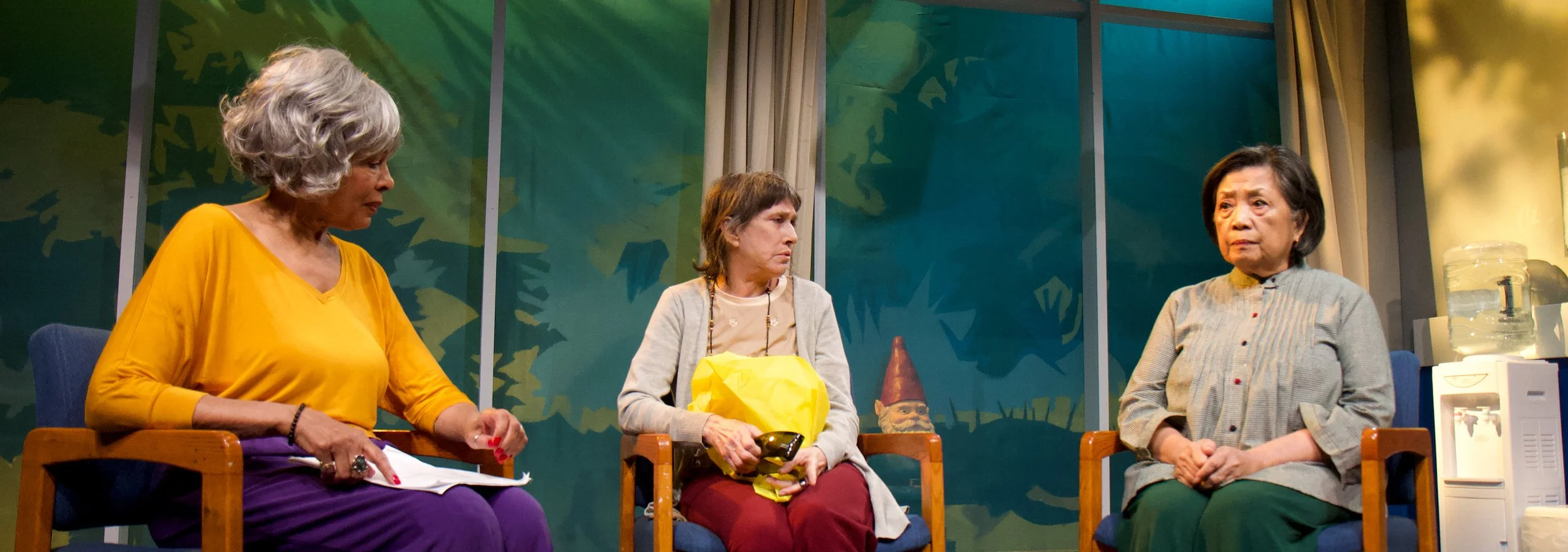Alan Turing, the British scientist and mathematician who helped break Germany’s Enigma code in World War II, is the subject of Hugh Whitemore’s 1986 play, Breaking the Code. Thanks partly to Derek Jacobi’s masterly performance, Turing’s story became well publicized as a result—his discovery allowed the Allies to know German maneuvers in advance, yet when he was found to be a homosexual a few years later, he was sentenced to chemical castration. Snoo Wilson’s Lovesong of the Electric Bear, first produced in 2003, also takes Turing as its subject, but it features Wilson’s preferred, anti-naturalistic style, with liberal helpings of surrealism and absurdism. Like Breaking the Code, which is far better known, Lovesong is concerned with the double-edged sword of society’s acclaim for its subject as a war hero and the private disdain for his homosexuality.
An important British dramatist since the 1970s, Wilson has encumbered his play with a great deal of fanciful froufrou and a pop culture sensibility. The work begins with Turing’s death by his own hand, poisoned with cyanide, and is structured as a trip back through his life. Turing’s companion/guide is his teddy bear, aka Porgy Bear, played by Tara Giordano in a big brown bear costume with half of her face bearing a strange tattoo that may be part of the Enigma code or just advanced mathematics equations. Bear and master jump on a bicycle and travel back in time.
If Wilson’s trademark use of fantasy is an attempt to leaven the grim story, it backfires. The episodes of Turing’s life often feel assembled from bits and pieces, like verbal bricolage. A sharp-eared theatergoer can pick out anachronisms that would not have been part of Turing’s life (1912-54). There’s “Here come da judge,” from the 1960s TV show Laugh-In, “orgasmatron,” a term coined in Woody Allen’s Sleeper (1973), and a drag gathering that seems a nod both to Cabaret and John Osborne’s A Patriot for Me. There’s also a discussion of J. Edgar Hoover’s cross-dressing life, although it’s unlikely Turing would have known of it, since it came to light decades later.
The play hurtles from scene to scene in Turing’s life: his miserable childhood, a mother (Nina Silver) who doesn’t understand him and is casually cruel (when he tells her he’s received an OBE, she asks, “They gave you an OBE? Why?”); and his unhappy romantic life. One Norwegian boyfriend is denied entry into England; another steals from him, and it is Turing’s complaint about the theft to authorities that sets him up for ruin. “I went to the police and the case stopped being about theft and started being about something else,” he tells a female associate. “And now my life is going to go down like a house of cards.”
Turing is throughout an innocent victim, dealing with bullying at his school and in the military from Blimpish, arrogant superiors, as well as parental neglect, all of which contribute to his desire to end his life. Indeed, as his friend Greenbaum (Peter B. Schmitz, very good in a variety of roles) notes, “the underlying problem with our grubby Peter Pan is, he has never grown up, never admitted defeat, never embraced ... resignation.” His assessment of Turing’s childish aura is echoed by Turing’s favorite movie, Snow White.
Director Cheryl Faraone’s production gives full rein to the bizarre elements, and sound designer Jimmy Wong kicks it up a notch or two with an eclectic selection of music, from Anglican hymns and carols to the Andrews Sisters’ “Beer Barrel Polka” to The Pink Panther theme and “The Colonel Bogey March.” In the last moments, Faraone plays off the apple in the Snow White story, using the Apple Computer logo as the final projection, but her embrace of Wilson’s style is no help. The device of the talking bear and the often frivolous tone quickly become tiresome.
All the gimmickry, however, doesn’t impair the cast, who give excellent performances (though it’s hard to judge how a giant teddy bear would behave), even when they smack of cartoonishness. The chief asset is Alex Draper as Turing. He has an open-faced charm, and his misery is moving; he is both heroic and vulnerable. Late in the play, in an encounter between Turing and Greenbaum, with Porgy offstage, a dose of real feeling comes through, and it’s like a breath of fresh air. But overall, despite their ambitions in staging this difficult play, one wishes that the fine actors at PTP/Potomac Theater Project were engaged in something more rewarding.






